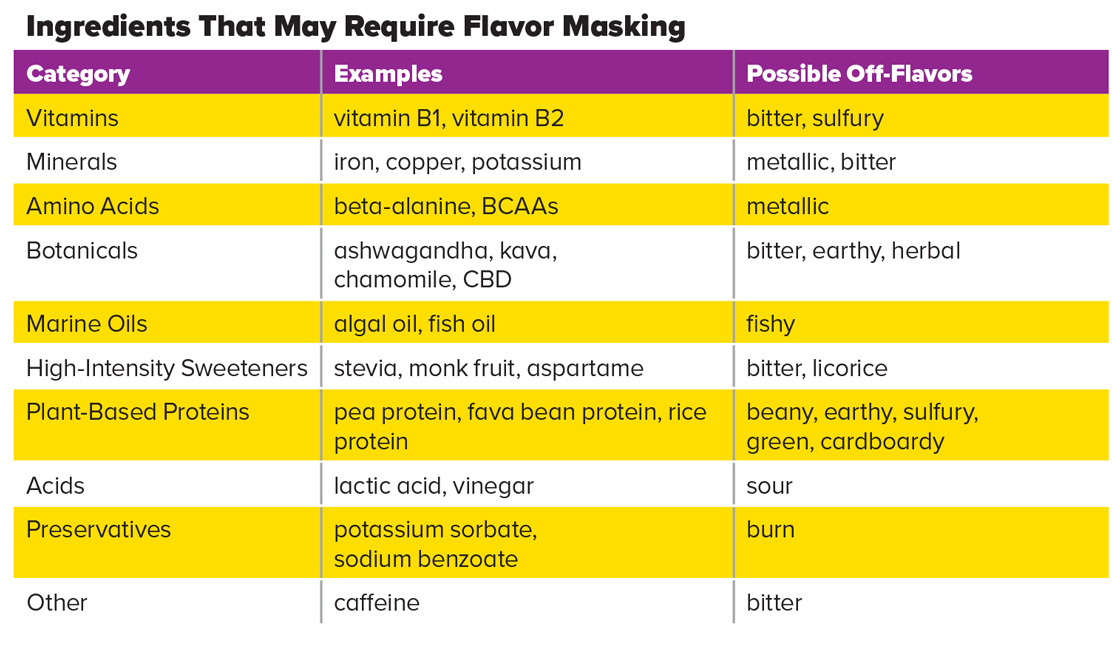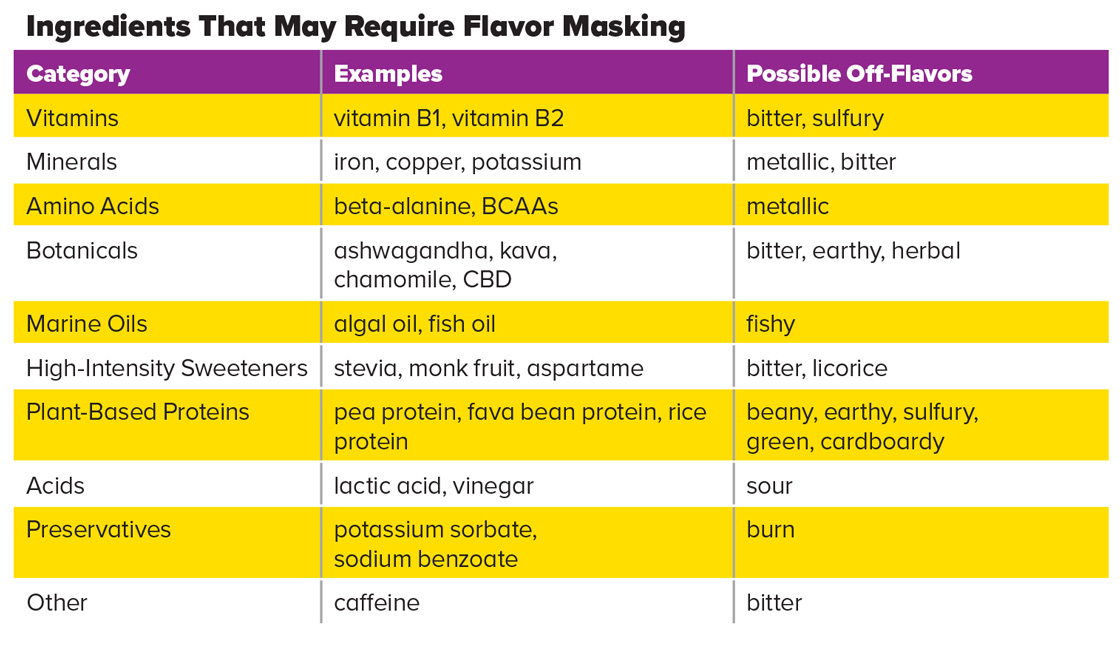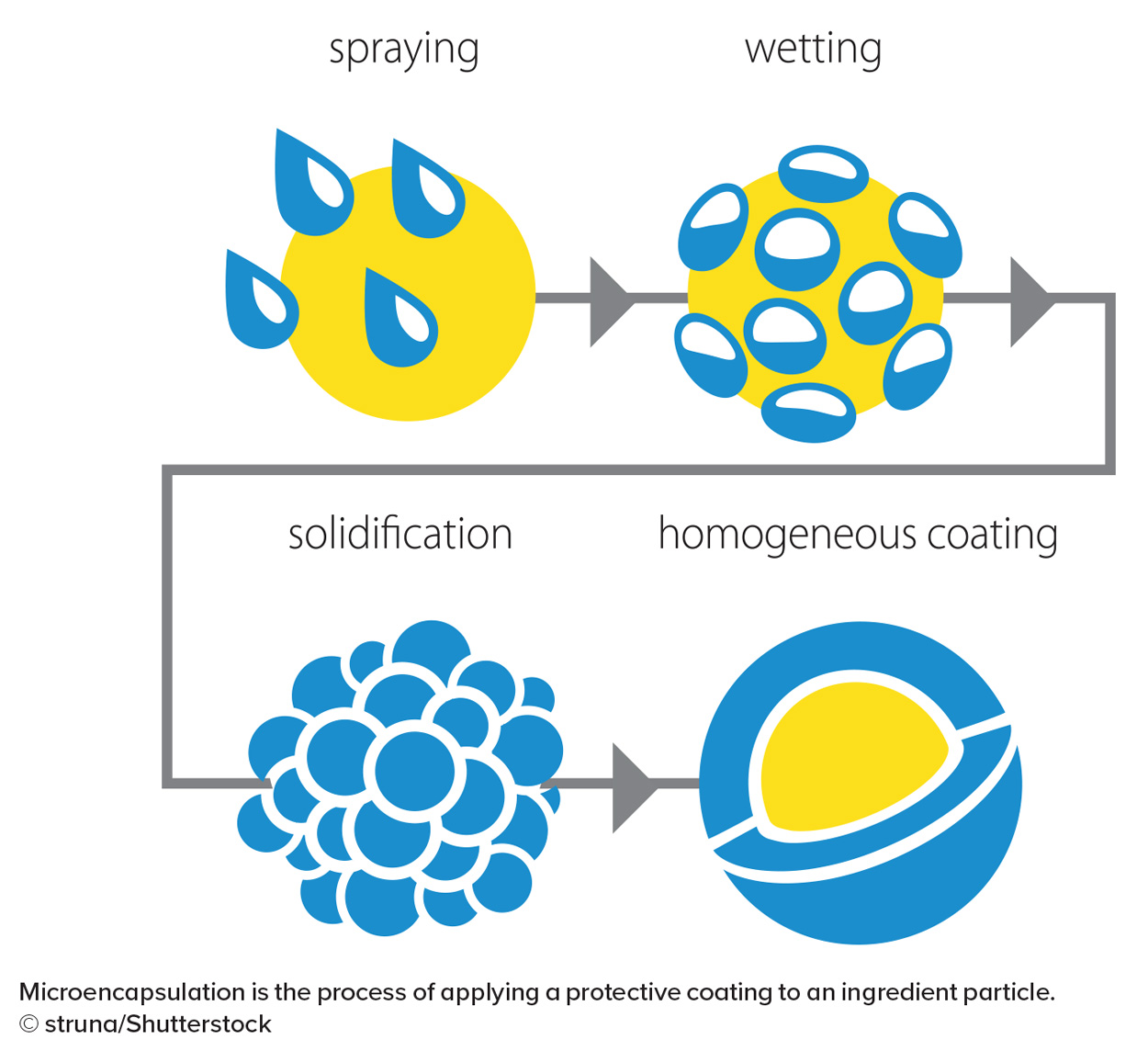Blessings in Disguise: Masking Off-Flavors
Ingredients | APPLIED SCIENCE
Consumers’ growing interest in healthier lifestyles is driving trends in fortified, functional, and other better-for-you foods and beverages, such as those with less sugar. But the benefits boost can come at the cost of off-flavors, whether it’s a nutrition bar, a plant-based meat, or a ready-to-drink wellness tea.
“The wealth of products with health and wellness benefits in the market now poses a unique challenge for flavorists and product developers,” says Darleen Shaffery, principal flavor chemist at Target Flavors. These products may have high levels of protein, vitamins, minerals, botanicals, caffeine, high-intensity sweeteners, or other ingredients that can contribute undesirable flavors, she says.
Understanding flavor masking—a strategy for disguising unwanted flavors—can be essential to creating successful products in the better-for-you arena. Flavor masking involves the use of ingredients that complement or cover the taste profile of a food or beverage, says Shaffery.
“There are two different approaches to flavor masking: psychochemical, which aims to trick the brain and how we perceive and recognize flavors, and physical, which changes how ingredients interact with odor or taste receptors,” explains Smaro Kokkinidou, principal food scientist at Cargill. Let’s take a step-by-step look at how to mask off-flavors to produce better-tasting food and beverage products.
Step 1: Optimizing the Base
Adding or increasing the amount of ingredients that impact the basic tastes is often the first step in flavor masking, accompanied by frequent tasting as you go. A slight amount of sweetness or salt, for example, can help mask bitter tastes, and sweetness can be used to mask acidic notes.
Sometimes reducing the perception of sweetness is desirable, but reducing the amount of sweetener would negatively impact body and mouthfeel. In these cases, salt, acid, or bitter tastes could be added. Fats, as well as viscosifying ingredients like gums, starches, and fibers, can minimize a variety of off-flavors because they not only coat the mouth but also slow the release of off-flavors from the food matrix.
Besides manipulating ingredients such as salt, acid, and fat early on to help neutralize off-notes, it’s important to choose the best type of each ingredient, says Ana Rodriguez, product manager at Imbibe. “For example, when tackling a stevia formulation, we would advise using a specific fat source, salt levels, and other food additive ingredients compared to a nonstevia-based formula,” she says.
Step 2: Choosing the Right Flavor
If an off-note is still coming through, the next step may be choosing a characterizing flavor that complements the off-note. The natural bitterness of dark chocolate, coffee, or grapefruit can complement bitter off-notes, for example, while orange or lemon may be good flavor choices for products with sour off-notes.
For earthy off-notes, adding a nut flavor can be effective, such as opting for peanut butter chocolate over plain chocolate. If the off-note is sulfury, as with some plant proteins, a ripe raspberry or strawberry flavor can add balance.
Step 3: Using a Masking Solution
For challenging formulas, you may also need a masking solution. One option is to add a masking flavor (also known as a flavor masking agent or a flavor masker), a blend of flavor compounds designed to mask particular off-notes.
“Our current offerings include protein, bitter, stevia linger, acid, preservative, and vitamin masking flavors,” says Target Flavors’ Shaffery. When the off-notes come from multiple ingredients, however, “it’s better to design a single solution around the base in order to address all of the issues within the product,” she adds.
When and how to introduce masking tools is also a key aspect of the process, notes Rodriguez. If a flavor masker is used incorrectly or too late in the process, “it can risk muting characterizing flavors and turn what was once a complex flavor profile into a one-note experience,” she says. In addition, too much flavor masker can impart an off-note of its own.
Rodriguez cautions against using a masking flavor that contains flavor compounds found in the characterizing flavor. “For example, it’s common to see vanilla-forward masking flavors used to mitigate off-notes effectively,” she says, but in a vanilla-flavored product, these types of maskers don’t work well. Imbibe’s NonSense masking solutions account for this factor.
Cyclodextrins, another option, are best suited for flavor masking in beverages and other aqueous systems due to their hydrophilic exteriors. These ring-shaped oligosaccharides can trap certain types of molecules within their cavities, masking both flavors and odors. But because the cavity is hydrophobic, a molecule must be at least partly hydrophobic to bind to the site. It must also be able to fit in the space. Cyclodextrins like Wacker’s CAVAMAX products are available in three different ring sizes for broader application and can mask bitterness from functional botanicals including green tea catechins, ginkgo extract, and ginseng extract.
For the most stubborn ingredient off-notes, another possibility is microencapsulation, the process of applying a protective coating (such as ethyl cellulose) to an ingredient particle. Glanbia Nutritionals’ NutraShield Microencapsulations line, for instance, includes microencapsulated vitamins, minerals, amino acids, and botanicals like ashwagandha.
But microencapsulation is not just for flavor and odor masking, explains Gary Wada, director of process and technical operations at Glanbia Nutritionals. It can also improve stability, prevent ingredient interaction, and modify the release of ingredients, he says.
“[Microencapsulation] can even be used to slow the release of masking flavors into a finished product,” says Rodriguez.
Learning Objectives
- Understand the process of flavor masking.
- Learn which ingredients can benefit from flavor masking.
- Review flavor masking solutions in the market.






